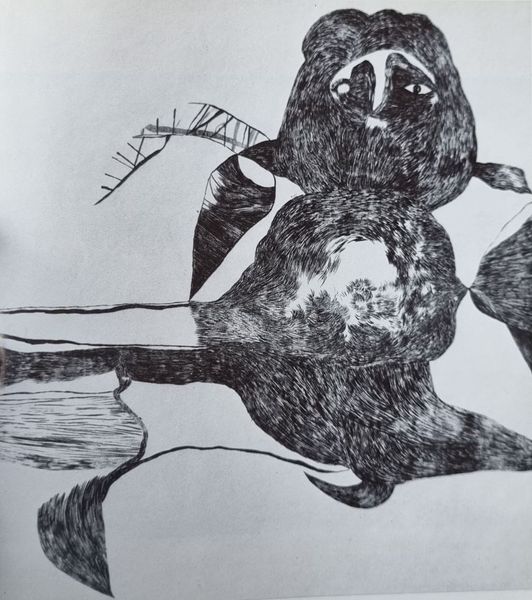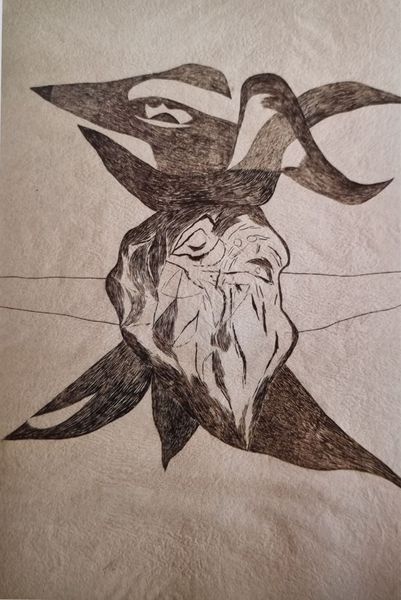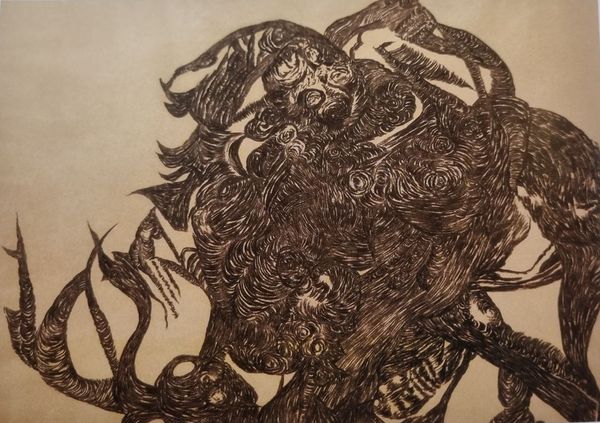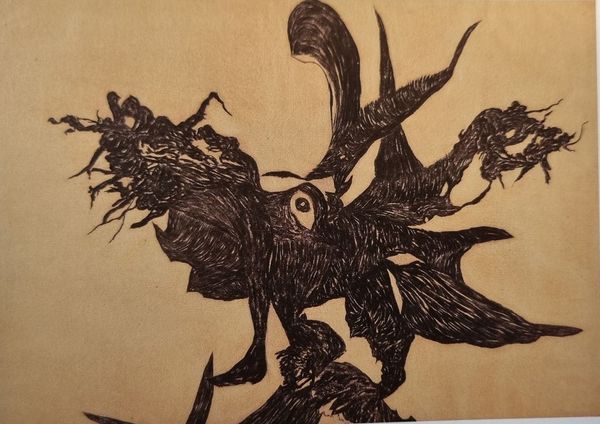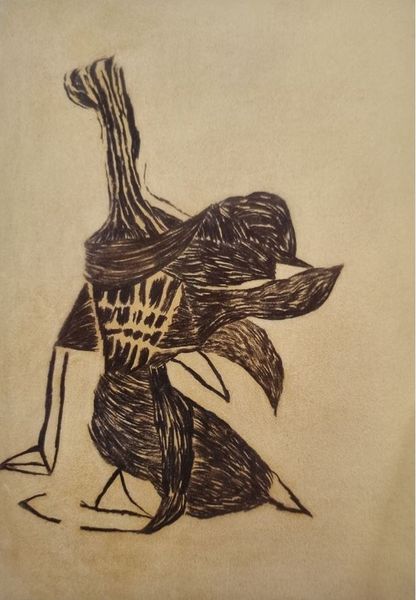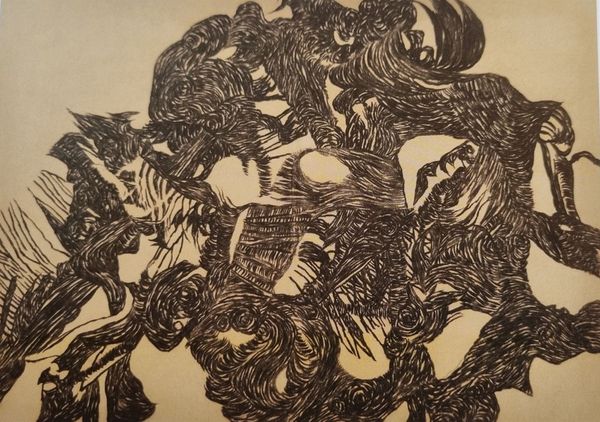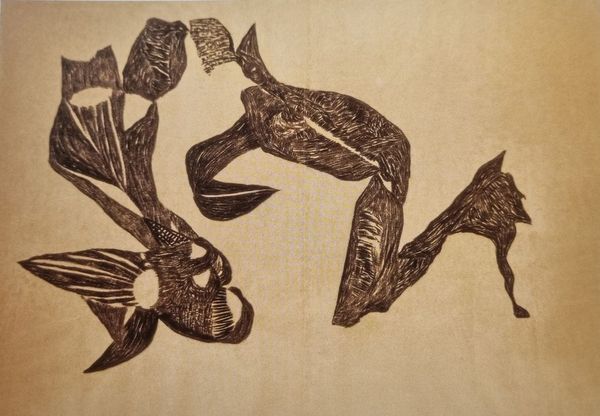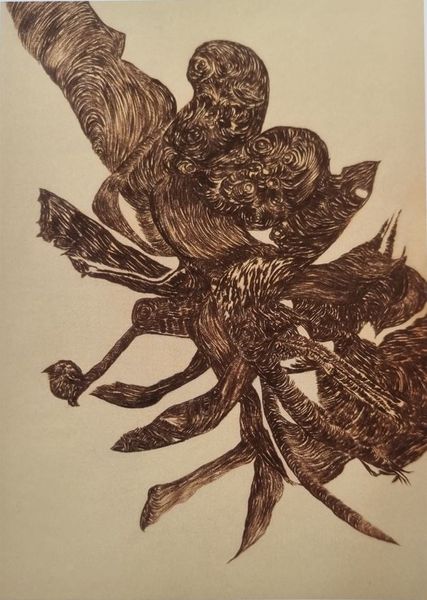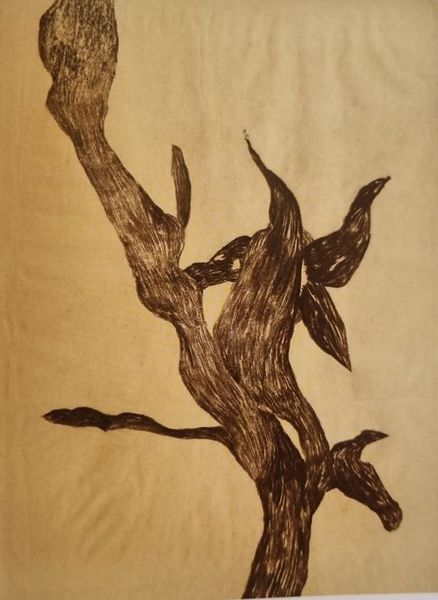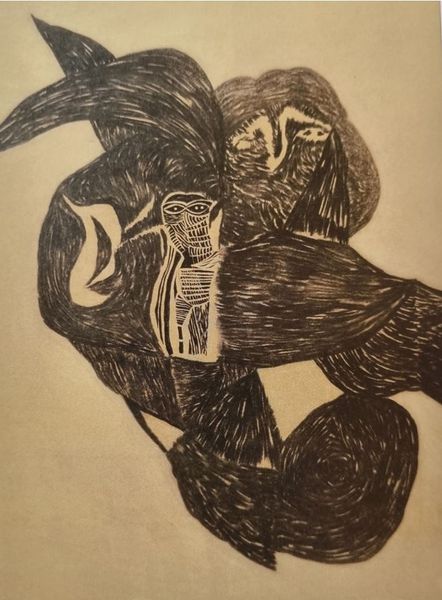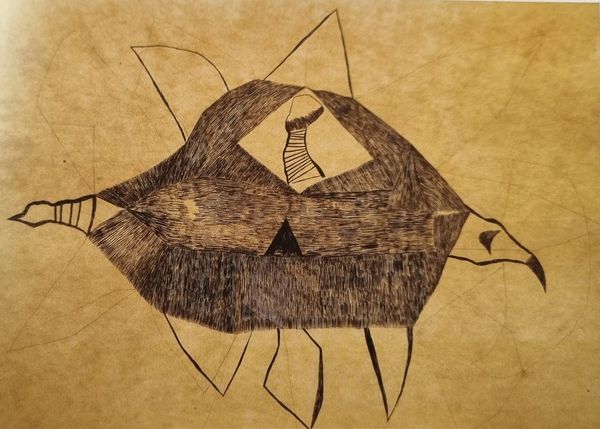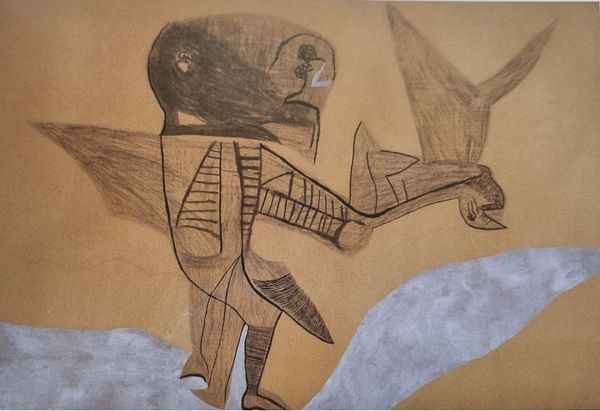
Copyright: Public domain
Curator: Vajda Lajos's "Owl Head," rendered in 1939 with Indian ink on paper, a study in abstraction, and measuring 82.3 by 66 cm. Quite striking, don’t you think? Editor: It’s like staring into a fever dream. That dark, feathered mass…the eyes peer out with such vulnerability, like it knows too much. Curator: Well, Vajda’s relationship with material reality was… complicated. Remember he explored dual unity? The city and village? He's always looking to bridge dualities. The materials themself contribute - think about the labor and accessibility involved. Indian ink allows a certain replicability but the handmade quality and artistic vision persists. Editor: It's an immediate gut reaction – the texture almost scratches at you, even visually. And yet, it draws you in closer to discern the figures within figures...a visual representation of introspection, maybe. Curator: Ink allows for incredible precision. That texture that you felt immediately? All meticulously created to produce both visual appeal and communicative potential, bridging representation and… almost surreal abstraction. Also important is considering Vajda was a Jewish-Hungarian artist just before WWII. These portraits reflected his social contexts. Editor: Definitely evokes that feeling of impending dread. The owl stares out and I'm staring back like I can hear secrets being whispered about the approaching darkness. And it's true about the portraits, looking through these abstractions lets you access historical reality so clearly, so intensely, almost better than more concrete historical art, paradoxically. Curator: Right. He uses readily available materials—paper and ink—elevating them through intense craft to transcend mundane representation. Consider the paper choice as well – it affects how the ink is received and distributed. Every component, from material procurement to final display, engages with broader networks of economic and societal relationships. Editor: When I see that birdlike form coalescing from almost shapeless scribbles, I immediately flash on themes of memory. How trauma reshapes reality, leaving only the faintest outline of what was… and looming sense of loss. Curator: So we see Vajda doing much more here than just creating an owl, an illustration—but engaging with contemporary existence in a way that persists through how we see it made, and the period which bore it into the world. Editor: Absolutely, this little owl becomes something almost unbearably important after discussing this with you...It makes you realize how vital artistic reflections really are in this world!
Comments
No comments
Be the first to comment and join the conversation on the ultimate creative platform.
